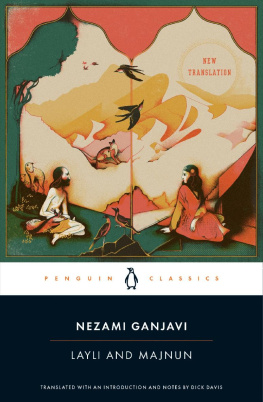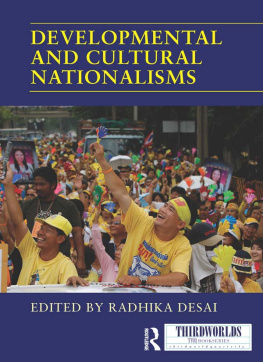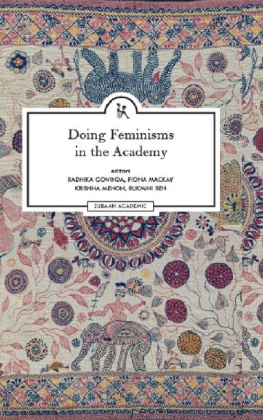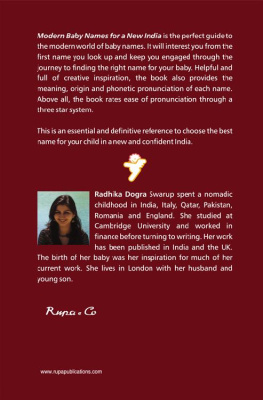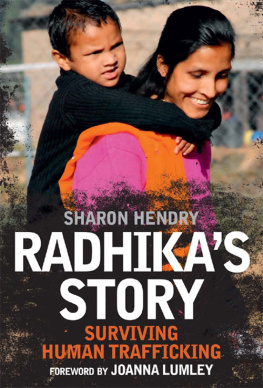Penguin Books is part of the Penguin Random House group of companies whose addresses can be found at global.penguinrandomhouse.com.
This digital edition published in 2016.
This book is sold subject to the condition that it shall not, by way of trade or otherwise, be lent, resold, hired out, or otherwise circulated without the publishers prior consent in any form of binding or cover other than that in which it is published and without a similar condition including this condition being imposed on the subsequent purchaser.
Radhikas lover, lotus-eyed one, beloved son of Nanda, Life force of all gopis, churner of hearts, Lord of the world, Hail to thee, Krishna
Introduction

It was a time of chaos and anarchy. After a millennium of glory, the Eden of the South was under siege. The soaring vimana of the famous Brihadeeshwara temple, outstanding monument to southern artistic sensibilities, bore mute witness to unprecedented change. After being ruled by the imperial Cholas, Hoysalas and Nayaks, it had now been subjugated by the Maratha general Venkoji Raja Bhosale, half-brother of the great warrior Shivaji. Fortuitously, this event turned out to be propitious for this centre of learning. Celebrated for its temple architecture, literature, music, painting and other diverse art forms, Thanjavur benefited greatly from the Marathi-speaking kings who administered their kingdom in the Telugu language, while ruling over a Tamil-speaking population. This unique hybrid produced an unusual and highly evolved courtly culture.
Pratapsimha, who ruled Thanjavur from AD 1730 to 1763, was at first an unlikely ruler, being the illegitimate son of Raja Tukkoji Bhosale and a concubine called Annapurna. However, he did ascend the throne after the untimely death of the kings eldest son and was immediately caught up between the warring French and English colonial powers. His reign was one of palace intrigues, civic disturbances and constant wars but, despite this, he went on to become one of the great kings of Thanjavur. He was secularhe built the mosque at Angoraand a prolific intellectualhe penned several Marathi works like Krishna Manjari, Uma Samhita and Parijata Nataka. A linguist and art enthusiast, he welcomed poets and scholars from all over India into his court; in particular, he is known to have patronized renowned musicians like Veerabhadraya as well as four brothers known as the Thanjavur Quartet, who codified musical traditions and sadir that became the forerunner for the dance form that is today known as Bharatanatyam.
Besides the Maratha kings finely developed sense of aesthetics, the city of Thanjavur was also renowned for its courtesans. An intrinsic part of Indian tradition for several centuries, they find mention in the early Puranas that record the custom of dedicating maidens to temple deities. Variously known as devadasis (servants of gods), devaradiyal (slave of god), bhogam (embodiment of enjoyment), kalavati (receptacle of the arts) and gudisani (temple lady), these women were the hereditary proprietors of the performing arts. Fted and celebrated as nagara shobhinis (ornaments of the city), the rich aesthetic heritage of these women, embellished the cultural traditions of court and country.
Accomplished in the nava rasas, erudite, charming and intelligent, these women studied the classics in Sanskrit, translated them into vernacular languages, composed poetry, set lyrics to music besides playing various musical instruments, thus keeping alive traditional performing arts. Their presence at marriages and other festive occasions was much sought after and, soon, devadasis assumed a very important role in the sociocultural fabric of urban life. The best known amongst them often found mention in poetry and literature. For instance, in Ubhayabhisarika written by Vararuchi, one of the nava ratnas in King Vikramadityas court in Ujjain, a courtesan Priyangusena is described as being an expert in four types of acting, thirty-two types of hand gestures, eighteen types of eye movements, six types of positions and three types of rhythms. Their popularity reached its pinnacle between the tenth and thirteenth centuries as their numbers grew in direct proportion to the wealth and prestige of the state and their patrons. The number of devadasis in a temple was also directly proportionate to its wealth and prestige. History records that Raja Raja Chola, who built the Brihadeeshwara temple in 1010, gifted it 400 devadasis.
These talented women were honoured with titles, gifts of land and jewellery, and their names etched in stone in temple chronicles and inscriptions for posterity. Thus respected by society, ganikas also gained legal rights so that they could possess land, slaves and money. As their stature and wealth grew, many of them also became known for their charitable works. For example, in the eleventh century, a devadasi called Shantavve commissioned the largest water tank in present day Karnataka which irrigated 7000 acres of agricultural land and is, indeed, serviceable even today. It is not surprising then that such accomplished women often became the consorts of kings.
The jewel in the court of Pratapsimha was a ganika called Muddupalani (17391790). Born in Nagavasram in Thanjavur district, Muddupalani was the granddaughter of an exceptionally gifted courtesan called Tanjanayaki, who was not only a talented musician but was also adept at the nava rasas. At her soirees, where music and conversation flowed, she entertained learned scholars and aristocrats. But her maternal instincts kicked in and she longed to have children. She adopted a boy and a girl, children of Ayyavaya, a man she considered her brother. She raised the young boy, whom she named Muthyalu, to adulthood, and got him married to another talented and beautiful courtesan called Rama Vadhuti. A staunch devotee of Lord Subramanya Swami, Muthyalu named his first-born daughter after the temple town of Palani where stands a famous temple dedicated to the beautiful warrior son of Lord Shiva. Keeping the surname Muddu before the name, a general practice in the south, Muddupalani was thus born into an extremely talented, artistic and devout household.


